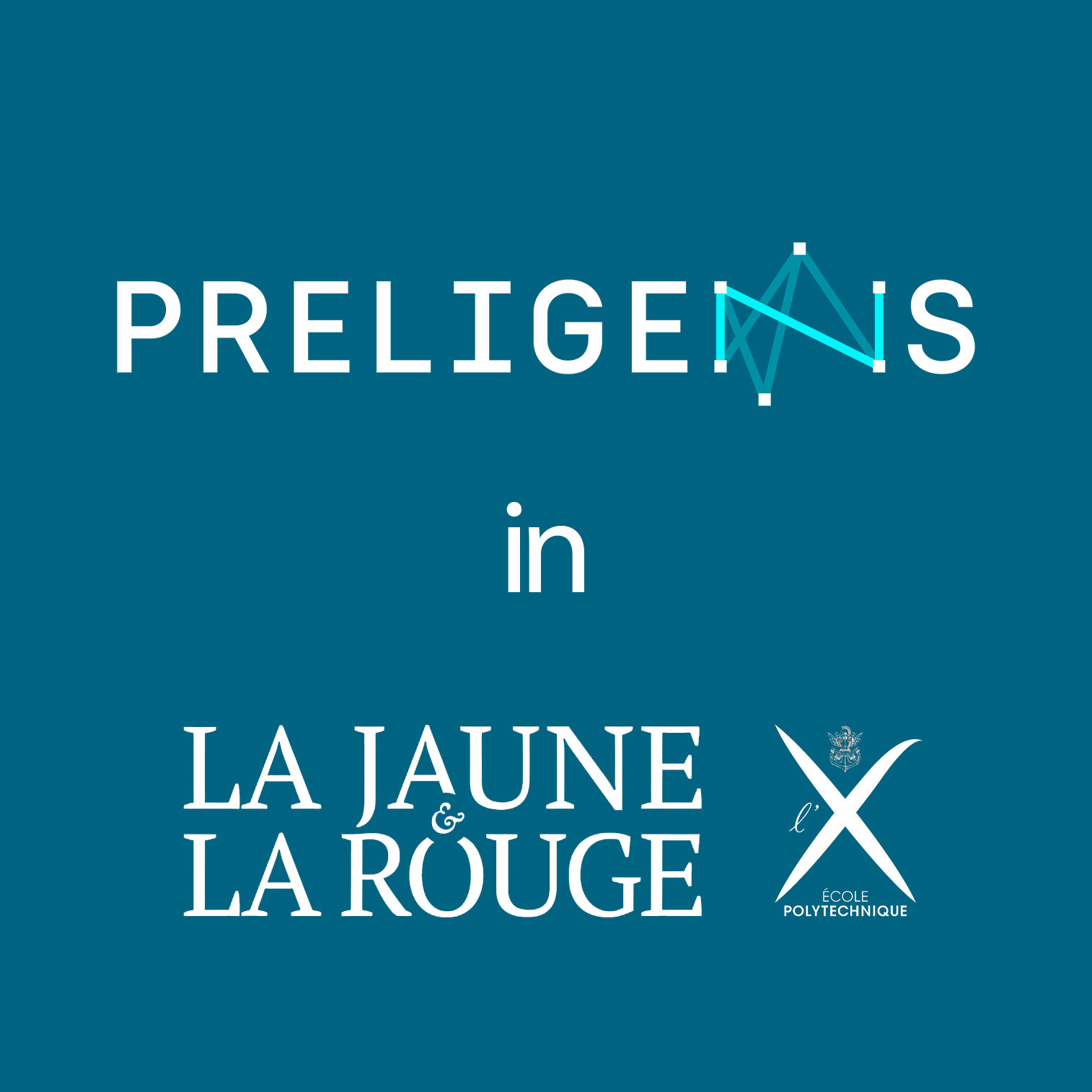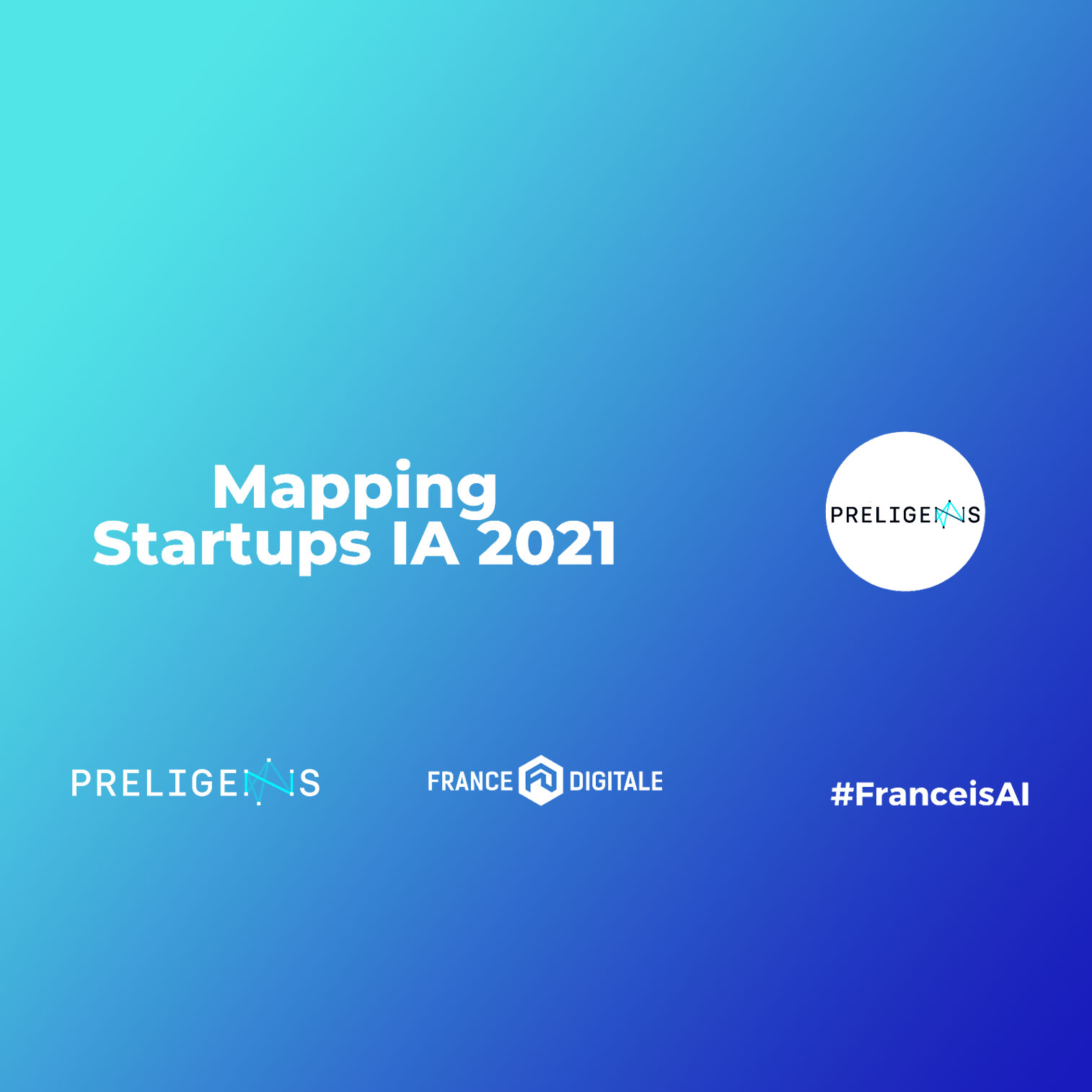A civilian start-up in defence, the reasons for a success

11/15/2021 by Tugdual CEILLIER
There is nothing better than a concrete example to show the fruitfulness of the collaboration between the defence world and civilian start-ups in terms of innovation. Preligens is a remarkable success in this respect.
Preligens was created in 2016 under the name Earthcube by Arnaud Guérin and Renaud Allioux, who graduated from Centrale Paris and then Supélec. Their ambition at the time was to launch a constellation of cubesats, very small satellites, to make thermal infrared observations of the Earth. The aim was to offer a fully integrated service from image acquisition to image processing, in order to report only relevant events to customers, for example leaks in a hydrocarbon pipeline. It is in this context that Tugdual Ceillier joined the company as its first employee, to handle the image processing. At the same time, another branch of the company was developing an affordable, space-based thermal infrared camera, taking advantage of bolometric technologies. With the support of the CNES (Centre national d'études spatiales), this camera was successfully tested during stratospheric balloon flights.
First round of funding: a focus on software
Quite quickly, the start-up that was Preligens sought to raise funds to finance its rapid growth. It then realised that not only did investors seem more inclined to finance software development (image processing) than hardware development (the camera and the satellites), but that the need for image processing was also growing exponentially because of the very substantial investments made in sensors. While it is true that few satellite images in the thermal infrared were available (and this is still the case today), there was a very large quantity of images in other spectral domains, in particular the visible. It was therefore possible to create a lot of added value by exploiting this existing imagery.
With the image processing part of the project already well underway, and with the topics related to AI in general being exciting, the decision was made to pivot towards building products using commercial images from satellite operators. From a technical point of view, this meant moving from thermal infrared imagery at 50m resolution to visible imagery at 50cm resolution! It also meant abandoning the development of the infrared camera, which still has to be functional in the company's storeroom...
The search for a market: the evidence of defence
We then entered a phase of searching for relevant markets, scanning as widely as possible to explore a maximum of possibilities. Since satellite imagery is by its very nature very versatile, there was no shortage of possible applications: agriculture, environment, insurance, infrastructure security, raw material stocks, etc. But as we gradually looked further into the subject, we quickly realised that the first sector to consume satellite imagery was, by far, the defence sector. This even applies to commercial imagery, which, although produced by civilian actors, is intended for the military for about 80%.
Moreover, this is a sector whose budget is rarely questioned and which has a strong interest in financing innovation in order to maintain a vital technological lead. Without necessarily closing ourselves off from other markets, it was therefore obvious that we should explore this possibility as a priority. We were all the more enthusiastic because this is a field where the level of requirement requires both extremely reliable and high-performance technical solutions and in-depth knowledge of the various experts involved in often critical operations. Actively contributing through our technologies to building a safer world was also a particularly inspiring mission for our young company.
First contact: RAPID project
Nevertheless, for a new player, still small in number of employees at the time and not yet having strong recognition of its skills, it was not easy to approach the right players in this sector to propose a new service. One way of doing this is to go through a research project, in order to demonstrate the interest of a technology and its expertise, while exchanging with potential users of these technologies. This is the case of the RAPID projects (dual innovation support system), steered by the DGA ( French Directorate General for Armaments), which aim to encourage the development of so-called dual technologies, usable for both civilian and military applications.
Based on our experience with infrared imagery, we therefore proposed a project on the detection of man-made changes between satellite images taken at different dates. As a small player in a world dominated by the big historical players, the process of obtaining validation for this project was not an easy one! We had to justify many times the relevance of the subject, our capacity to carry it out, the technical feasibility... And it would not have been possible for us to obtain it without associating ourselves with Onera (Office national d'études et de recherches aérospatiales), a recognised institution.
This project enabled us to get in touch with the potential end users of the technologies we were developing, within the armed forces. This link was essential and allowed us to understand a great deal about professions that are not well known and even less publicised. This knowledge is of course fundamental in order to produce products that meet needs in an appropriate way, beyond the pure technical aspects.
The trigger: the Vehicle Challenge
Around the same time, a challenge called the Vehicle Challenge was launched by the DRM (Directorate of Military Intelligence). The aim was to show the best possible performance in the detection of vehicles such as cars and trucks in very high resolution satellite images such as those provided by the Pleiades satellites (70 cm resolution). This was both a key task for defence analysts, since knowing the positions of vehicles in a theatre is essential information, and a very difficult technical problem, since the vehicles are only a few pixels in size and can be very close to each other.
So we took on this challenge, which fitted in perfectly with the applications we were developing. As the technical solutions were very different from those used for change detection, we took in hand and adapted to our use case the state-of-the-art methods in object detection: deep neural networks, or deep learning.
As the data provided had been labelled with points, whereas the most efficient technical solutions required precise clipping of the objects, we relabelled all the objects. This allowed us to better understand the difficulty of this task and to measure the contribution of automatic solutions to support the human in his work. Having won this challenge, we were also planning to develop a complete and operational tool that could be integrated into the Thales SAIM (multi-sensor interpretation assistance system) image processing platform.
Operational development: the TAIIA project
The RAPID project and the Vehicle Challenge have enabled us to interact with the end users of our products. Having identified that the key to deep learning was the quality and diversity of the data, we invested early on in labelling, with an ever-increasing ability to finely recognise objects of military interest (aircraft, helicopters, ships, vehicles, etc.), often down to the precise model.
This enabled us to develop a cloud-based site surveillance product, using commercial imagery and demonstrating our ability, for a set of sites of interest, to accurately count and locate key observables and provide relevant alerts to analysts faced with an ever-increasing stream of imagery. Analysts could then focus their expertise on unusual situations, where their detailed knowledge of the situation and the issues at stake enabled them to put the detections made by the AI into context and draw high-level conclusions.
This avalanche of images was set to increase further with the launch of the CSO observation satellites (Optical Space Component, a series of three optical reconnaissance satellites that are part of the French weapons programme), which provide significantly more images than before, with much better resolution. Our solution for monitoring strategic sites, which drastically reduces the human time spent on a recurring task, therefore met a strong operational need. Our very good results in the RAPID project, as well as the high level performance of our rendering for the Vehicle Challenge, earned us the confidence of the DRM, which decided to launch an experiment of our site monitoring product on their sovereign data.
This project, named TAIIA (image processing and analysis by artificial intelligence), had to be functional in their infrastructure, without an internet connection and without us being able to easily intervene in case of a problem, since access to the premises is strongly regulated. It was at this point that we took full advantage of our ability to adapt, which is typical of small structures and new companies, to radically transform our solution and bring it up to the level of software and operational reliability required. We can say that no one at the DRM has seen a new solution implemented and adopted so quickly, including training and support for operators in these profoundly new tools.
The Ministry of the Armed Forces has also recently placed a major new order with Preligens to further accelerate the deployment of AI in satellite image analysis. By perpetuating TAIIA, the Ministry of the Armed Forces is reaffirming its desire to rapidly integrate and disseminate as much as possible the innovations that directly meet the operational needs expressed by the services and forces. The DRM, an organisation not prone to unbridled communication, has put a YouTube video online to publicise this experiment and explain how it increases their analysis capabilities tenfold.

The French Minister of the Armed Forces Florence Parly visits the Preligens premises in November 2020.
Exponential growth and international development
To establish itself as a major player, a company like Preligens must necessarily aim for international development. This is why, in parallel with our development in France, we have also established contacts with other countries or international institutions. In particular, we have conducted extremely successful research projects with the Defence Science and Technology Laboratory (DSTL) in the United Kingdom and demonstrated the ability of our algorithms to increase the processing capacity of the NATO Intelligence Fusion Centre (NIFC). This allowed us to see that our solutions were extremely competitive with those of extremely well-funded foreign players.
Five years on
Founded in 2016, Preligens now has over 140 employees worldwide, with offices in the US, UK, Benelux, Germany and Singapore. To manage this strong growth while continuing to deliver high-performance AI solutions tailored to our customers' needs, we have had to constantly reinvent our operation.
We have truly industrialised the development and improvement of AI algorithms, in what we call the AI Factory, which allows us to control the end-to-end production chain, from data selection and labelling to production, using the latest neural network technologies and reliable performance measurement on data representative of operational use cases. We have also expanded our product range and now process a wide variety of data, from optical imagery to social network messages to ship beacons at sea, to best meet the specific needs of all our customers.
Today, we are a company dedicated to applications for the defence community. Working for the defence community has taught us a lot about the many different professions that exist in this field and has allowed us to appreciate the qualities and skills of the military. It has made us demand more of ourselves and we are proud to provide effective solutions for these exceptional people. At the same time, the values of Preligens have remained unchanged, with a strong focus on the well-being of employees and mutual support within the company.
Newcomers are quickly integrated and put in a position of responsibility, and the organisation of the various teams allows for great flexibility. Work-life issues are at the heart of the HR policy, with, for example, a ten-week second parent leave when a child is born. The training courses that have been introduced and the new professional opportunities allow all employees to progress rapidly. Preligens is continuing to grow, with many opportunities worldwide, while at the same time being a workplace of exemplary quality.
About Preligens
Preligens (previously called Earthcube) is a company founded in 2016 and dedicated to the development of artificial intelligence-based software for the defence and intelligence sector. As analysts are faced with an exponential increase of available data, the products developed by Preligens aim to automate repetitive tasks to allow them to focus their expertise on high value-added tasks. Initially focused on the analysis of satellite images in the visible range, the company now processes a wide variety of data, in order to cross-reference information from different sources. Preligens has raised funds twice, the second time with the participation of the French Ministry of Defence fund Definvest. It now has 140 employees and subsidiaries in five countries in addition to its headquarters in France.


